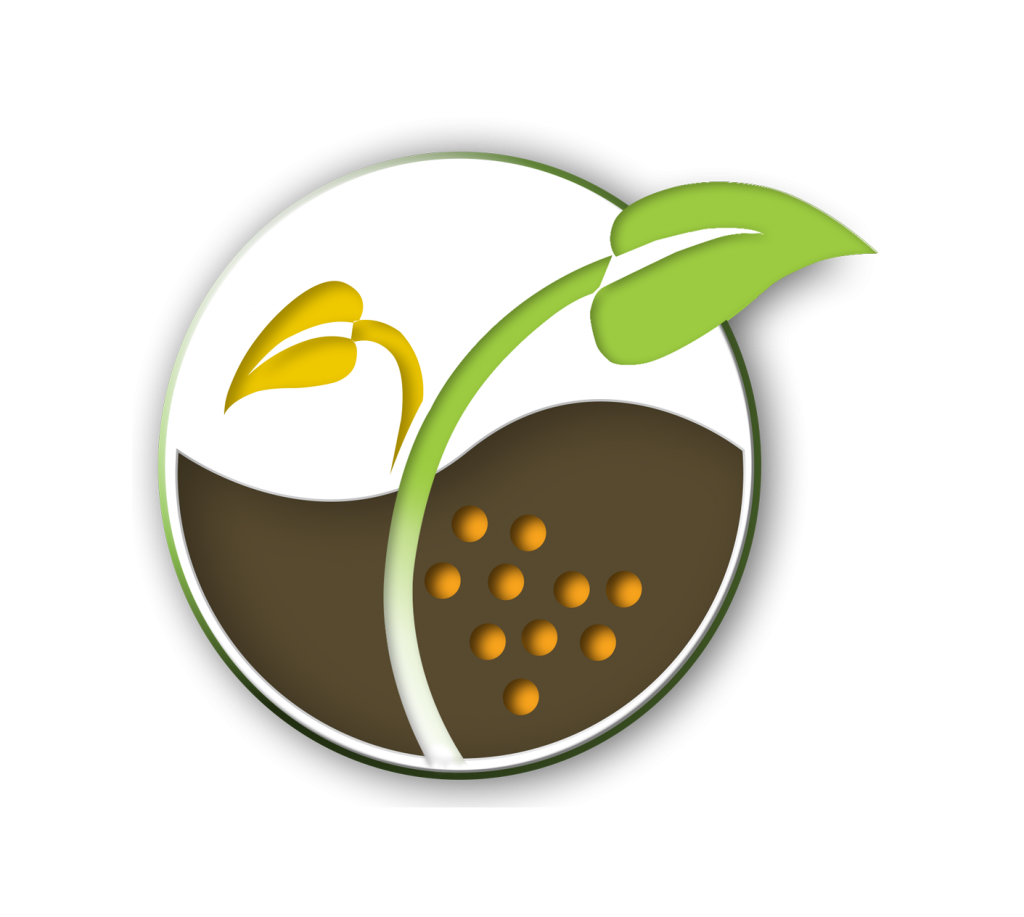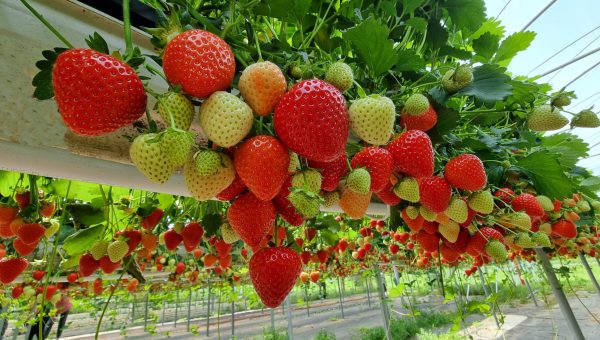Integrated Control and Rational Use:
From agronomic knowledge to product catalog

Integrated Pest and Disease Management as a starting point
Introduction to the problem
Integrated Pest and Disease Management (IPM), as defined by Royal Decree 1311/2012, was born to promote a sustainable use of phytosanitary products. Its objective is to reduce dependence on chemical treatments, prioritizing prevention, observation and informed technical decision-making.
In essence, IPM represents the balance between agronomic efficiency and sustainability, combining the use of multiple tools: inputs (fertilizers, biostimulants and phytosanitary products), good agricultural practices (irrigation, fertilization), the use of pollinators, sensors and different control methods, both chemical and biological. All these tools must be applied rationally and based on agronomic and scientific knowledge.
In recent years, however, some market players have used this technical framework as a business argument, disassociating the practice from the principle that gives it meaning. These are products and companies that, under the pretext and cover of the terms “integrated” or “biotechnological”, present themselves as innovative, but lack scientific validation or reproducible results. These products are often accompanied by a discourse characterized by the use of scientific terminology that is empty of content and not very rigorous.
In other words: it is not the GIP-IPM model that has failed, but the commercial interpretation that some companies make of it to sell their products.

When "integration" becomes an excuse
Products without technical or scientific validation
The growth of biotech agriculture and the demand for sustainable solutions have generated a veritable explosion of products on the market: biostimulants, biofertilizers, natural extracts, inducers, “biotech” complexes or consortia of microorganisms. Some are promoted as part of “integrated” control strategies, but without due validation through technical trials to support their real efficacy.
A clear example is found in some products registered as biostimulants that use terminology typical of phytosanitary products: “disease control”, “improvement of plant health”, “effective against…”. However, these products have not gone through a phytosanitary registration process, which would require demonstrating their efficacy, recommended dosage and safety under real application conditions.
Therefore, we can state without any doubt that the claim or commercial message used in many of these cases is, to say the least, misleading. It cannot be assured that the product is
Instead of reinforcing the philosophy of IPM, this trend has distorted it. Technical concepts and scientific terminology have been incorporated into the discourse to lend credibility, but are not supported by experimental evidence.
Thus, the term “integrated” has become an umbrella term for both good practices based on science and bad practices based on marketing.
This confusion has direct consequences: the farmer no longer distinguishes between what is scientifically validated and what simply “sounds good”.
The result is a loss of confidence, an overload of treatments and an increase in costs with no return.
Commercial pseudoscience: the noise of the marketplace
How brands communicate to sell
A significant part of the new products that reach the agricultural sector are expressed in pseudoscientific language, full of technicalities that promise extraordinary results: “enzymatic activators”, “microbiome enhancers” , “bioinducer complexes”, “controlled symbiosis”, among others.
However, behind these terms, the label content often lacks a solid scientific basis: it is based on non-reproducible studies, generic mechanisms of action or, directly, there are no trials with statistical data to support the label content and technical recommendations for use.
The problem is not the use of technical language, but the lack of rigor that should underpin it. When scientific communication is used only as a commercial wrapper, the credibility of all biotechnological innovation is eroded.
This pseudoscience generates three negative effects:
Technical misinformation

The farmer loses judgment in the face of a confusing offer.
Value degradation

Products with and without evidence are equated in the discourse.
Unjustified costs

Management costs increase without real agronomic improvement.
The result is that the farmer ends up distrusting the whole range of products: both those that have demonstrated efficacy and comply with the registration processes, and those that have not demonstrated effectiveness and are marketed under unauthorized categories.
Rational use, on the other hand, is built on transparency: demonstrating and explaining what a product does, for what specific use, how it works and under what conditions it has demonstrated its efficacy. An authorized product is always accompanied by a clear, technical and honest message.
Two pillars of rational and responsible use:
- Validate the efficacy of the recommended dose, always the lowest possible with maximum efficacy, in real field conditions where it will be applied.
- Validate the safety of the product, ensuring that it is not harmful to the environment or to people.
📚 F or more information, we recommend you to read the articles published in spring about the phytosanitary registration process:
- Part I: The Phytosanitary Record: Evaluating the Efficiency and Effectiveness of a PPP.
- Part II: The importance of using authorized PPPs.

The Phytosanitary Registration Process: Assessing Effectiveness and Efficiency. Part I/II
Read more »Recovering the objectives of the GIP/IPM
A theoretical framework with fundamental principles
Integrated Pest and Disease Management (IPM/IPM) is not a closed model, but a technical decision-making framework. Its objective was never to fill the field with treatments of dubious efficacy, but to optimize interventions to achieve a balance between productivity, sustainability and safety.
The current challenge is not to replace IPM, but to recover its original essence, updating it with scientifically validated tools and data-driven decisions.
In this sense, the rational use of agricultural products that we propose in this post represents the practical and evolved application of IPM/IPM.
It does not contradict it: it materializes it.
It means making the right decisions, at the right time, and with the necessary technical support. It means diagnosing before applying, measuring before recommending and justifying each intervention from agronomy, not from the catalog.
Knowledge agriculture vs. catalog agriculture
Rational use is, in essence, a cultural change. It implies moving from “catalog agriculture ” – where action is measured by the quantity of products applied –to knowledge agriculture, where every decision has a technical and well-founded purpose.
Catalog agriculture relies on the “chemical” culture of the last century, based on the logic of “more is better” or “just in case”: apply more to prevent any possible problem. But this excess of interventions generates cost overruns, lower efficiency and an environmental impact that is well documented and completely unnecessary.
Knowledge agriculture, on the other hand, is based on observation, diagnosis and data analysis (soil, climate, plant and microbiota). It focuses on prevention, but also on cure, applying the necessary resources, at the right time and with the right criteria.
The 21st century farmer can no longer afford to act out of habit. He must become a technical manager of the environment-soil-plant system, capable of interpreting information, anticipating problems and making correct and sustainable decisions.
Validation as a principle of trust
The difference between a product that generates confidence and one that generates doubts is not in its discourse, but in its technical validation.
The main objective of Good Experimental Practices (GEP) is to ensure that efficacy trials are conducted with high quality, so that their results are comparable, reproducible and reliable. These practices ensure that the data obtained can be used by different registration authorities, as they regulate how efficacy trials are planned, executed, evaluated, recorded and interpreted.
In the agricultural field, GEP or BPE tests are applied to efficacy field trials of plant protection products, including biological control, ensuring the scientific and regulatory validity of the data submitted for registration.
For their part, CROs (Contract Research Organizations) are specialized companies that carry out these efficacy studies and other studies, such as residue or safety studies of agricultural products (plant protection products, biostimulants, fertilizers, etc.) under recognized standards such as BPE/GEP or GLP/GLP(Good Laboratory Practices).
A serious product is supported by:

Known mechanisms of action, explainable and consistent with the active ingredient of the product.

External testing by CRO companies accredited for GEP testing, with reproducible field studies based on the scientific method and under comparable climatic conditions.


Verifiable data demonstrating the described efficacy under real conditions of use.
Rational use requires this science-based knowledge. To apply without evidence is tantamount to improvisation, and improvisation has no place in a modern agriculture that seeks efficiency and sustainability.
For this reason, solutions such as the biological crop protection product authorized in Europe, T34 Biocontrol® (formulated with the T34 strain of Trichoderma asperellum), represent a model of sound biotechnology. Its efficacy is supported by numerous trials on different crops, validated by different authorizations for the control of multiple diseases under diverse climatic conditions. Its quantified benefits include the prevention and cure of foliar and soil diseases, an improvement of the root system and a qualitative and quantitative increase in crop yield.
That is the true value of innovation: that which is demonstrated, not that which is promised.
Evidence-based decisions
The axis of the rational use of agricultural inputs
Throughout the crop cycle there are multiple decision points: soil preparation, transplanting, nutrition, sanitary control, irrigation and post-harvest.
At each stage, the farmer can choose between two paths:
Apply by inertia, following generic recommendations.

Or apply judiciously, based on objective data and technical analysis.

Rational use proposes the second path: intervene only when there is a demonstrated need, using evaluated and quantified products, with clear and justified agronomic objectives.
This way of working is what makes IPM/IPM an efficient and real practice, not a slogan.
A fundamental pillar for sustainable agriculture
The role of the companies, the administration and the technical advisor in Integrated Pest and Disease Management.
IPM/IPM is a fundamental pillar for sustainable, safe and efficient agriculture. Its success depends on the active and coordinated involvement of all the agents in the sector: companies, administrations and technical advisors. Each of them must assume their role on a common basis of commitment to scientific knowledge, sustainability and social responsibility.
Companies

Companies are responsible for placing products on the market with proven efficacy and safety, based on scientific evidence obtained through trials conducted under recognized BPE/GEP and GLP/GLP standards.
Its actions must be governed by technical rigor and professional ethics, ensuring that the solutions offered really contribute to a more sustainable and safe agricultural production, avoiding unnecessary commercial practices that generate confusion or mistrust in the sector.
Administration

Public administrations must play an essential role in establishing technical and regulatory criteria based on scientific knowledge. Their role should be oriented towards ensuring consistency and responsibility in the regulation of agricultural products, applying homologated criteria aligned with European guidelines.
It is their duty to ensure that products undergo the corresponding evaluation and registration processes, avoiding duplication and overlapping between categories such as plant protection products, biostimulants or plant nutrition products. This is the only way to achieve a clear, effective and transparent regulatory framework.
Technical advisors

The technical advisor is the link between innovation, science and agricultural practice. Their work must be based on technical knowledge and safety in advice, applying sound IPM/IPM criteria and using tools and products rationally.
A trained and up-to-date advisor gives the farmer confidence and makes a decisive contribution to responsible, efficient and environmentally friendly production.
Final conclusions:
From confusion to consistency
The IPM/IPM is still an excellent technical framework. What needs to change is how we apply and communicate it.
The sector needs to move from a discourse saturated with promises to one based on proven results. From confusion to coherence.
Rational use does not replace IPM: it makes it possible. It represents its most faithful, scientific and transparent version.
On that path, technical validation, evidence and agronomic knowledge will be the tools that make the difference between real biotechnology and mere commercial rhetoric.
Because agricultural progress does not depend on having more products, but on better understanding what the crop needs, using agricultural inputs precisely, at the right time and with the right criteria.
If you are a farmer, technician, or distributor:
Now is the time to lead the change.
At Biocontrol Technologies, we believe that the future of agriculture lies in solutions that respect the environment and ensure the viability of farming. We advocate for agriculture based on knowledge, science, and innovation.
Contact us, learn about our biocontrol solutions, and join the movement toward efficient, safe, and climate-responsible agriculture.







